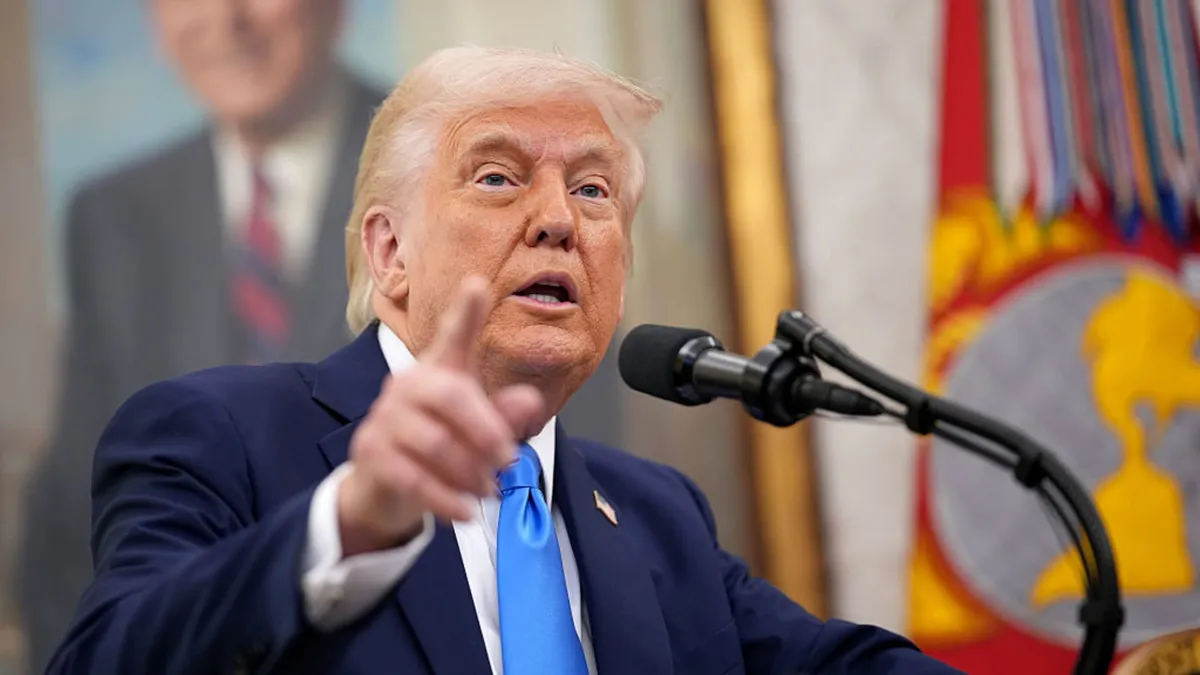
President Donald Trump is poised to unveil his most significant round of tariffs yet, marking a pivotal moment in U.S. trade policy. While many details surrounding this announcement remain unclear, one certainty is that some of America's trade partners will experience substantial economic repercussions. Scheduled for Wednesday, Trump will present reciprocal tariffs targeting countries that impose their own duties on U.S. goods or engage in practices deemed as unfair trade barriers by the White House.
Trump has referred to this launch as America's liberation day and described it as "the big one." However, the specifics of the plan have generated significant uncertainty, particularly concerning the number of countries affected, the criteria for calculating tariff rates, and which nations will bear the brunt of these tariffs. Despite the ambiguity, Trump maintains that these new tariffs are crucial for redefining America's economic relationships on a global scale.
Within Trump's administration, there are mixed signals regarding the focus of these tariffs. Treasury Secretary Scott Bessent recently mentioned the "Dirty 15" during an interview with Fox Business, referring to the 15% of nations that constitute the majority of U.S. trading volume while imposing substantial tariffs and non-tariff barriers on American goods. While Bessent did not disclose the names of these countries, he underscored the need for targeted action.
In a follow-up interview, Kevin Hassett, director of Trump's National Economic Council, noted that the administration is considering 10 to 15 countries responsible for the entirety of America's trillion-dollar trade deficit. However, specifics on these countries were also not provided.
Data from the Commerce Department indicates that in 2024, the United States faced its highest goods trading deficit with China, followed by the European Union, Mexico, Vietnam, and other nations. The list of countries with significant trade deficits includes Ireland, Germany, Taiwan, Japan, South Korea, Canada, and India, among others.
In an effort to address unfair trade practices, the Office of the U.S. Trade Representative has called for public comments on trade barriers and has identified 21 nations of interest. Notable countries in this list include Argentina, Australia, Brazil, Russia, Saudi Arabia, Turkey, and the United Kingdom.
Despite the anticipation surrounding the announcement, the White House has not clarified the specifics regarding the upcoming tariffs or the "Dirty 15." Trump further complicated matters on Sunday by dismissing the notion that only 10 to 15 countries would be subject to these reciprocal duties. He stated, "You'd start with all countries," implying that there would be no predetermined cutoff for tariff implementation.
Trump has frequently cited America's trade deficits as evidence that many trading partners are exploiting the U.S. However, many economists argue that the fact that the U.S. imports more than it exports from various countries is not inherently negative. Instead, it reflects a robust domestic demand for goods that may be more economically sourced from abroad.
The impending import duties will add to a series of tariffs that Trump has already enacted, including blanket tariffs on China, steep tariffs on goods from Canada and Mexico that do not align with an existing trade agreement, as well as tariffs on steel and aluminum. Recently, Trump also announced tariffs on foreign automobiles and key component imports, with indications that more tariffs targeting specific industries, such as pharmaceuticals, are on the horizon.